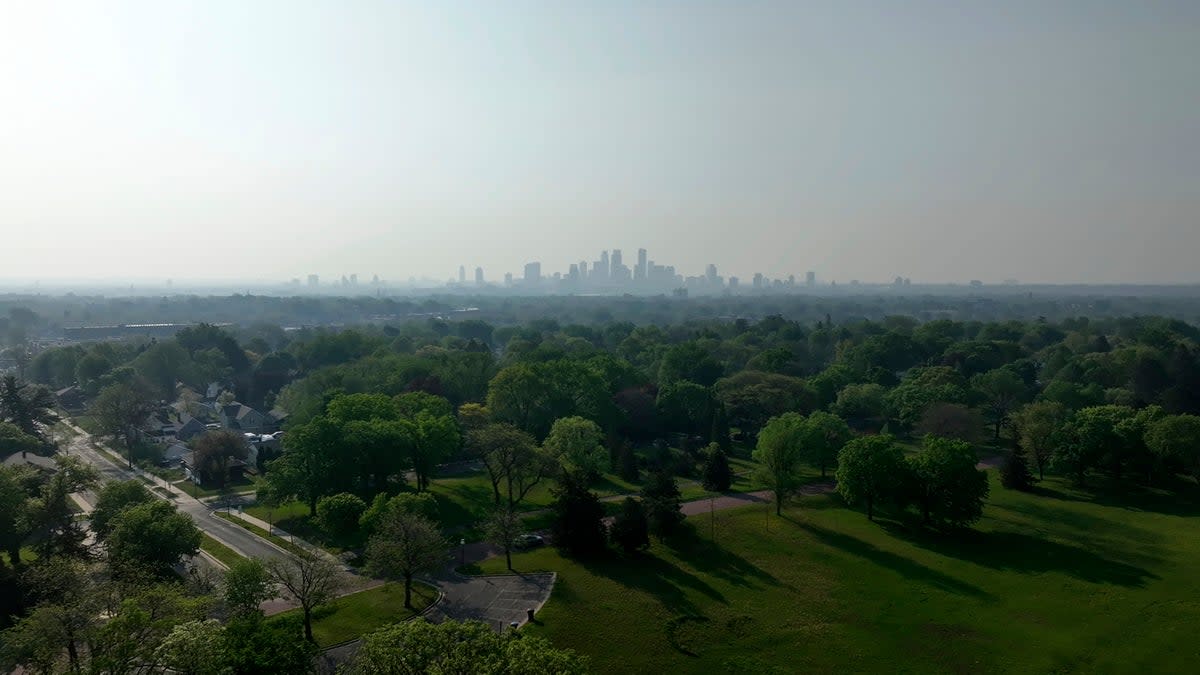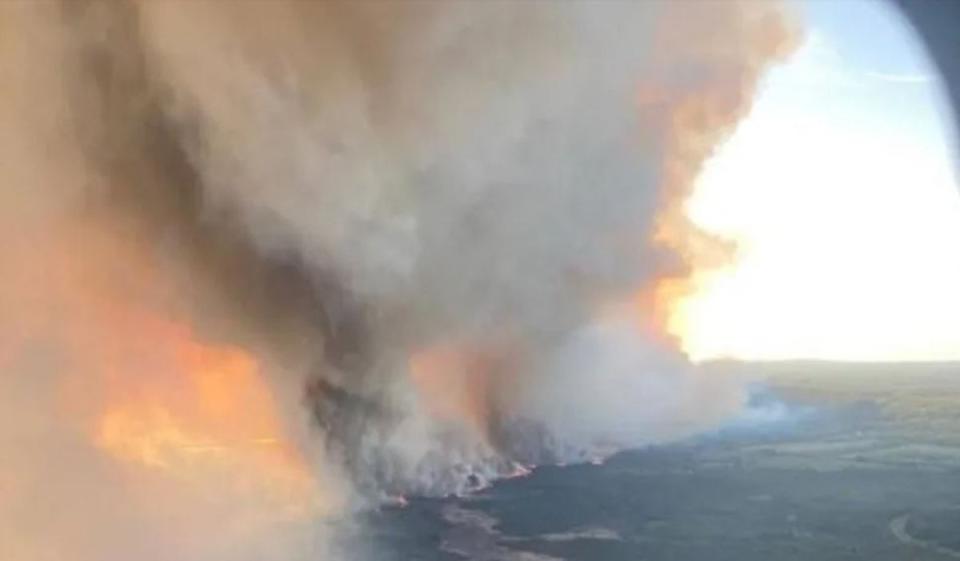Smoky skies return to at least six US states as Canada wildfires rage and 21 million face air quality warnings

Smoke from Canadian wildfires is threatening at least 21 million in the US as several states experience poor air quality levels.
The fumes from the fires, which started last week, are being carried into parts of the northern and central US. Air quality maps showed that levels in Oklahoma, Kansas, Nebraska, Iowa, the Dakotas, Michigan, Minnesota, Montana and Wisconsin were experiencing heavy smoke.
People in those areas with health conditions, such as asthma, should avoid being outside for extended periods of time.
In Oklahoma, Kansas and Missouri, the fumes were marked as unhealthy for sensitive groups.
The return of poor air quality reminds many Americans of last summer when smoke from Canada blanketed the US and left an orange haze around many major landmarks.

On Monday morning, air quality levels were unhealthy for northern Wisconsin, southern Minnesota, northern Iowa, Nebraska and the Dakotas.
By Tuesday, those levels had improved slightly but poor air quality remained in parts of Minnesota, Wisconsin, Nebraska and northeastern Kansas, AccuWeather reported.
The smoke from the wildfires had largely stayed in Canada until last weekend when thousands were forced to evacuate from their homes in Fort Nelson, British Columbia.
“Thanks to a change in upper-level winds in the atmosphere, that smoke has begun to make its way into parts of the northern Plains and the Upper Midwest,” Matt Benz, a senior meteorologist for AccuWeather said.

The smoke is likely to result in hazy or milky conditions instead of blue skies, the outlet warned.
Compounding the issue, Mexico has started to experience its own wildfires that
are likely to spread smoke northward. Parts of southern Texas and Louisiana were experiencing heavy smoke levels as of Tuesday afternoon.
The smoke is likely to vary in intensity and could be hidden by clouds, rain and thunderstorms.
Over the next few days, the smoke from Canada could be confined to the Upper Midwest, parts of the Great Lakes and spread to the central Plains throughout the week.

Additionally, a storm moving from Kansas to the mid-Atlantic will help contain smoke in the northern states and parts of the Great Plains.
Poor air quality levels will continue to threaten the US as long as the Canadian wildfires continue.
Last year, wildfires turned large parts of New York City and the northeast orange as smoke traveled south. Though it’s not possible to completely predict how bad the air quality levels will be this year, experts say the smoke threat should be significantly lower even as the wildfires are expected to reach historic levels.

